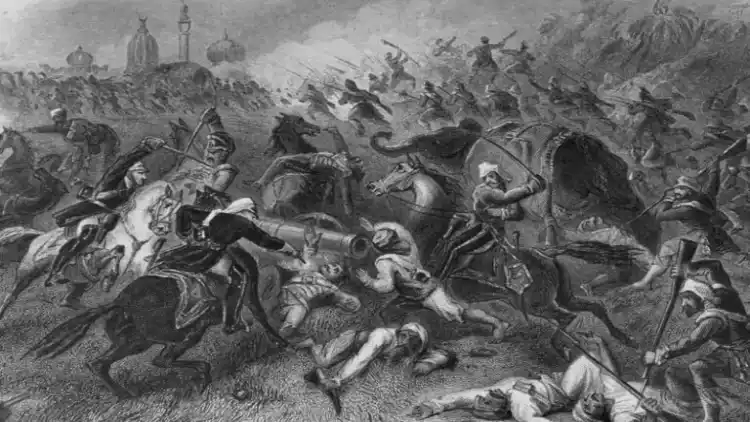
Saquib Salim
The oppressive British colonial rule was fought by every section of Indian irrespective of religion, region, language, caste or gender. There is a deafening silence on the role of women in fighting the British during the War of Indian Independence of 1857. Apart from Rani Jhansi and Begum Hazrat Mahal, there is hardly any other women whose name figure in the popular discourse about the 1857 war. In fact, apart from these royal women, a number of subaltern women took up arms against the foreign rulers. In West Uttar Pradesh (U.P) peasant and civilian women organized themselves in armed groups to fight. Many of these women like Asghuri Begum, Asha Devi, Beebee, Bhagwati and others were later executed by the British for fighting against them.
One of the most illustrious non-royal women leaders of the war against the British remains unnamed. She was an old Muslim woman who used to wear a green Burqa (veil), roam around the city urging men to fight. She rode a horse carrying a gun and a sword during the battles. Nobody knew her name, or maybe those who knew wouldn’t have survived the massacre carried out by the British.
Khwaja Hasan Nizami recorded the statements of several survivors who had seen this woman on the battlefield. She would arrive in the markets of Delhi and announce at the top of her voice:
“Come with me, God has called you into Elysium.”
This woman would ask people to join her to attack the British forces at Kashmiri Gate or at Ridge. People had witnessed her fighting with bare hands and her killing many enemy soldiers. One day, during a battle on the ridge, she fell from her horse. The British captured her and sent her to Ambala cantonment.
Lt. W.S.R Hodson wrote, on 29 July 1857, to Douglas Forsyth, the Deputy Commissioner of Ambala:
“My dear Forsyth, I am sending an old Muslim woman to you. She is a weird woman. This woman used to wear a green dress, carry arms with her, inspire masses for the revolt against us and lead them to attack our forces. The sepoys, who had faced her, testified that she fought with manly valour and was as strong as five men.On the day of her arrest, she was riding a horse and strategically leading the rebels in attacking us. We found a gun with her. Our soldiers testified that she killed several of our men with her impeccable shooting skill and sword.”
Hodson further noted that if remained free this woman would become a Joan of Arc kind of leader for the Indians and thus she should be ‘properly punished’. In his view, this ‘witch’ was ‘dangerous’ for the British interests.
Sadly, we do not have any records to trace what happened to this woman in Ambala. Historians tried to trace the name of this woman but could not find any conclusive evidence. This true daughter of the motherland sacrificed her life for the nation without her getting any recognition, a true selfless service.
(Saquib Salim is a historian and a writer)
